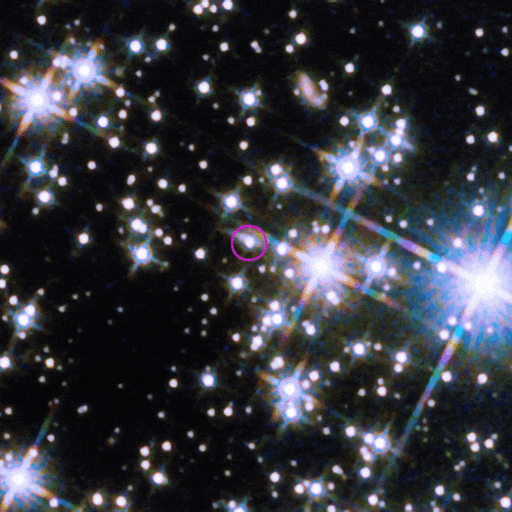New Study Finds Unique Structure of the ‘BOAT’—Brightest Gamma-ray Burst of All Time
UMD astronomer Brendan O’Connor led this research, which could explain why these ‘rare cosmic fireworks’ could be viewed for months.
When scientists detected the gamma-ray burst (GRB) known as GRB 221009A on October 9, 2022, they dubbed it the BOAT—the brightest of all time. Months after its initial burst, a new paper published in the journal Science Advances on June 7, 2023, offers a possible explanation for its powerful and persistent glow.
Gamma-ray bursts are the most violent and energetic explosions in the universe, releasing the same amount of energy in just a few seconds that the sun produces over its lifetime. According to scientists, GRB 221009A resulted from the collapse of a massive star into a black hole.

While examining troves of multi-wavelength data from October’s gamma-ray burst, a research team led by University of Maryland and George Washington University astronomer Brendan O’Connor found that GRB 221009A’s jet—the trail of high-energy particles expelled during its explosion—had an unusual structure. The jet exhibited a narrow core with wide, sloping wings, which was different from the types of jets seen in gamma-ray bursts produced by other cataclysmic events.
This may explain why scientists kept seeing GRB 221009A’s multi-wavelength glow for months after the explosion, according to O’Connor.
“GRB 221009A represents a massive step forward in our understanding of gamma-ray bursts and demonstrates that the most extreme explosions do not obey the standard physics assumed for garden variety gamma-ray bursts,” said O’Connor, whose team used the Gemini South Telescope in Chile to observe the event. “GRB 221009A might be the equivalent Rosetta stone of long GRBs, forcing us to revise our standard theories of how relativistic outflows are formed in collapsing massive stars.”
Brad Cenko, an adjunct associate professor of astronomy at UMD and a co-author of this study, said GRBs like these don’t happen very often.
“Brendan was able to show that gamma-ray bursts as bright as GRB221009A only occur once a millennium or so,” he said. “How fortunate we were able to witness these rare cosmic fireworks firsthand!”
The research team’s findings will fuel future studies of GRBs and motivate scientists to create simulations of GRB jet structures.
"For a long time, we have thought about jets as being shaped like ice cream cones," said Alexander van der Horst, associate professor of physics at George Washington University and a co-author of this latest research. "However, some gamma-ray bursts in recent years, and in particular the work presented here, show that we need more complex models and detailed computer simulations of gamma-ray burst jets."
###
In addition to O'Connor and Cenko, several scientists from UMD’s Department of Astronomy contributed to this research, including Postdoctoral Associate Igor Andreoni, Associate Research Scientist Alexander Kutyrev, and graduate students Gokul Srinivasaragavan and Erica Hammerstein. Joseph Durbak, a graduate student in the Department of Physics, is also a co-author.
Their study, “A structured jet explains the extreme GRB 221009A,” was published in the journal Science Advances on June 7, 2023.
This work was supported by NASA, the European Research Council, the National Science Foundation and others. This article does not necessarily reflect the views of these organizations.
This article is adapted from text provided by George Washington University.







